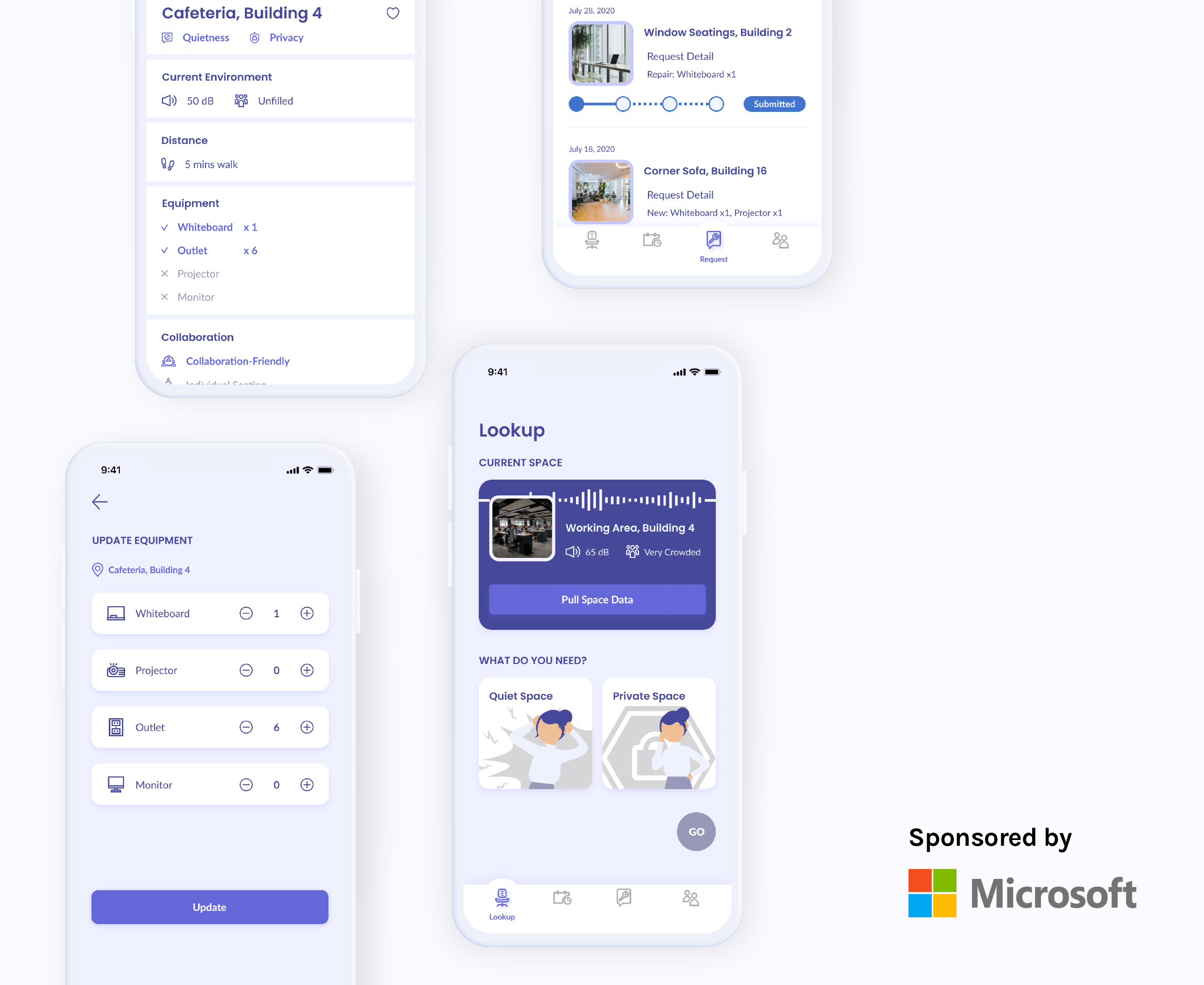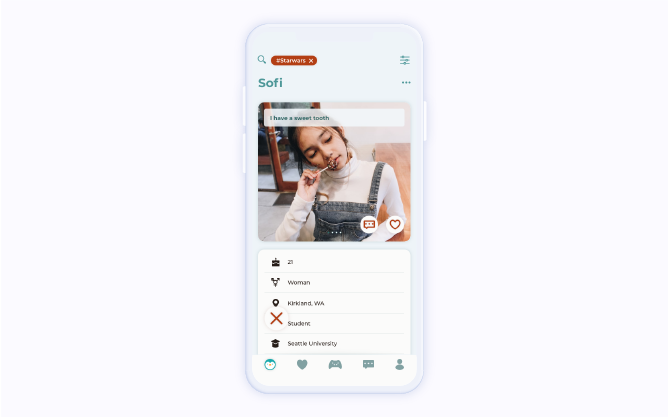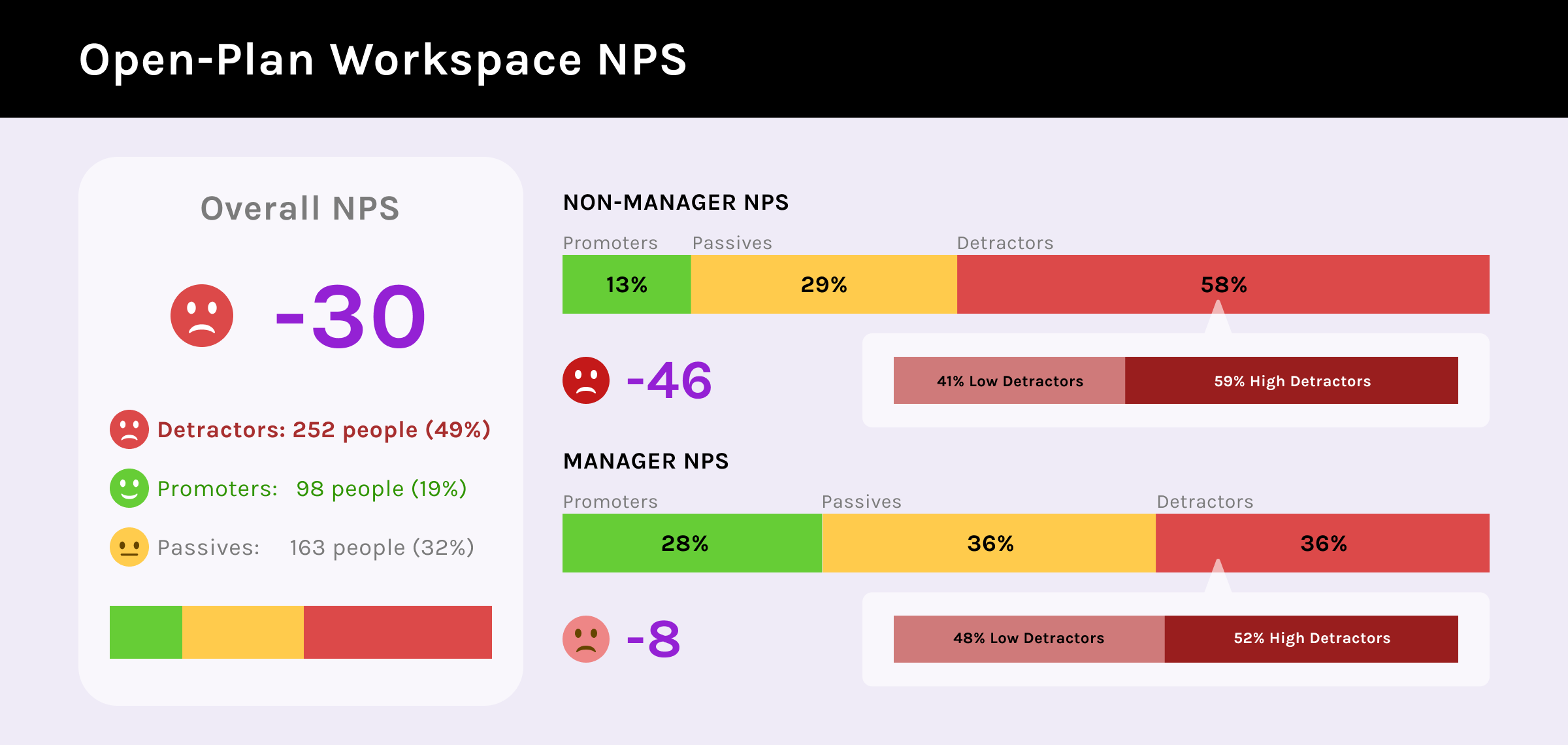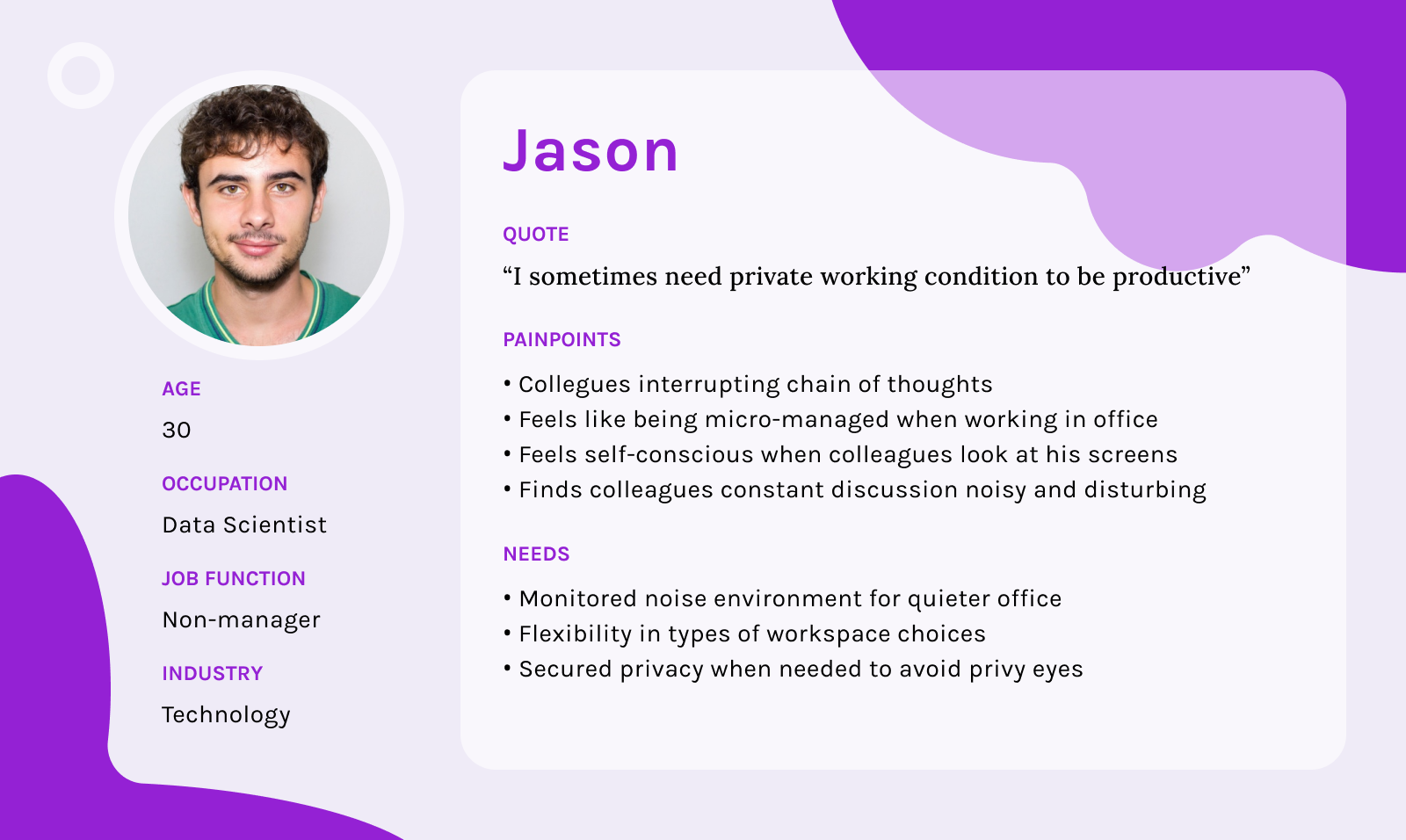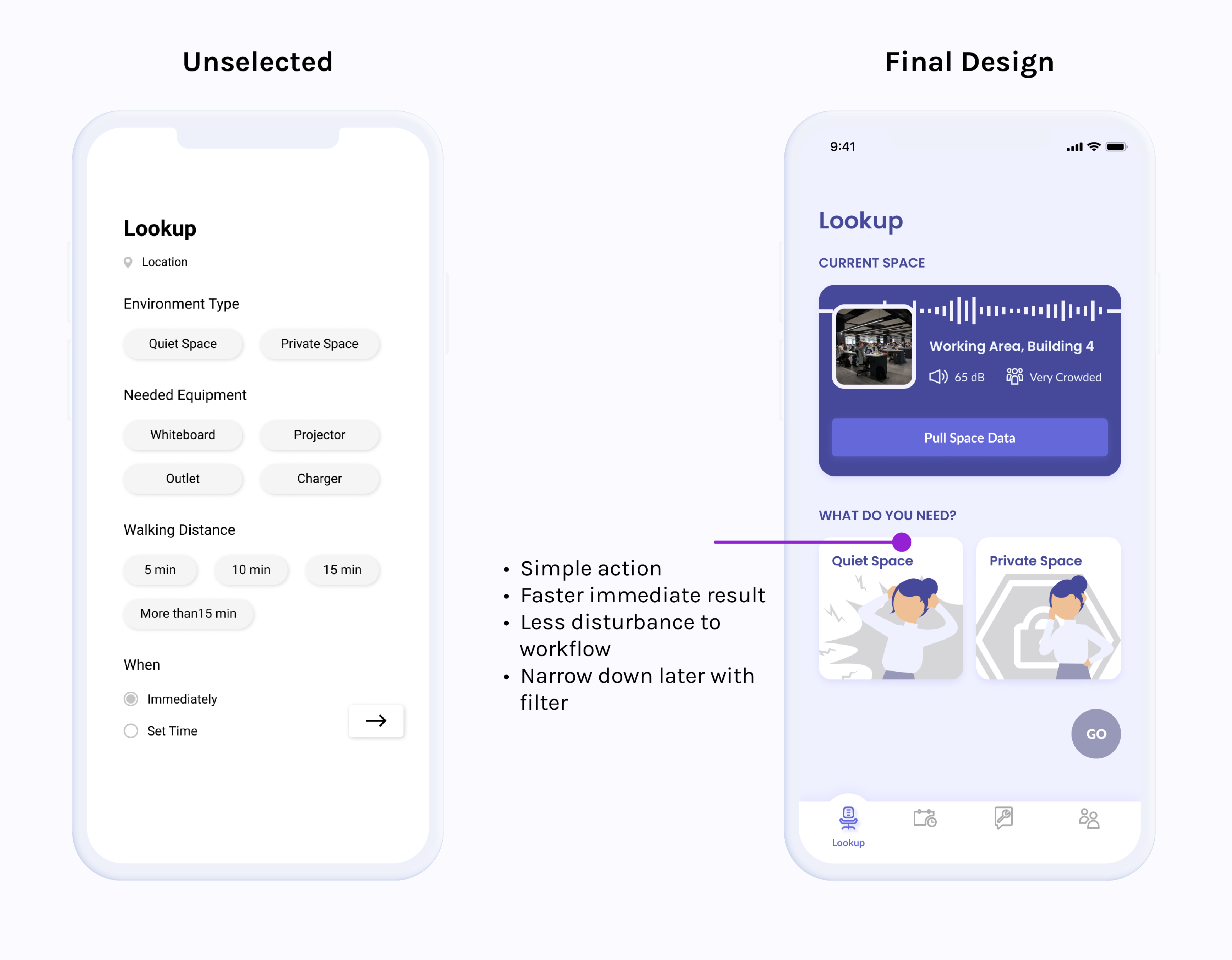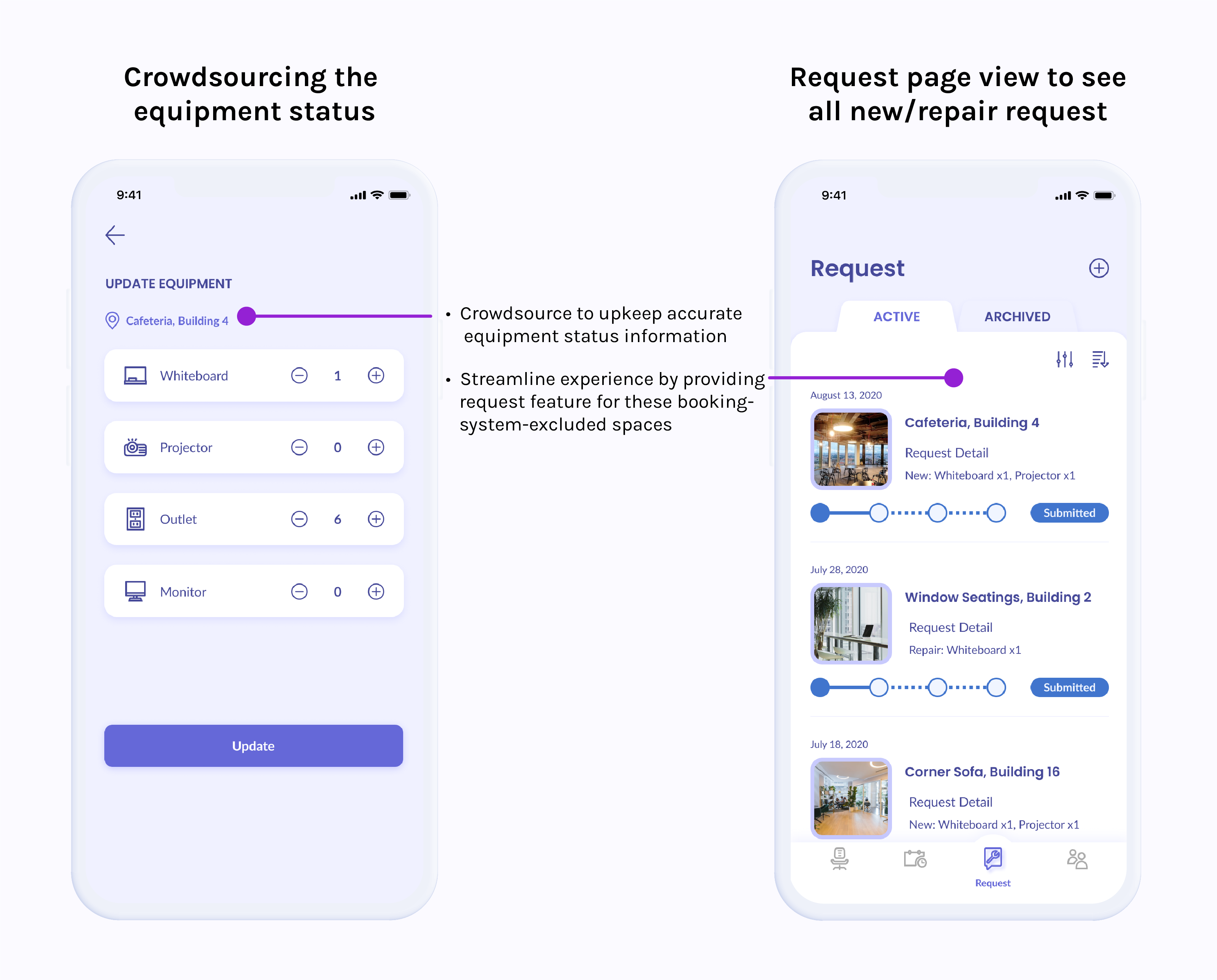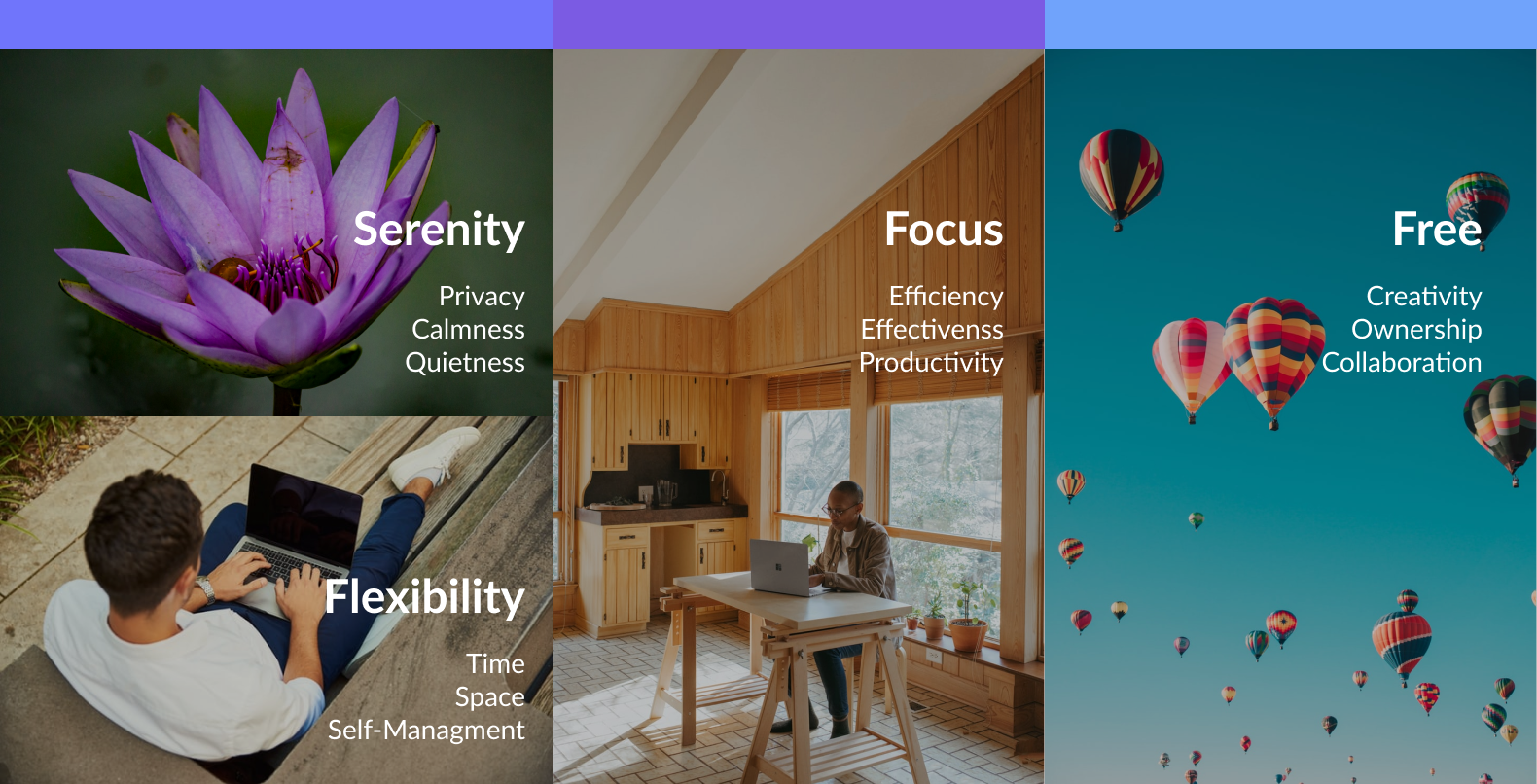Focusing on non-managers.
From the synthesized research result above, I created a persona to help me focus on the identified target audience and to avoid loosing sight of the TA's pain points. While we acknowledge the manager workers' perception on open-plan workspace does not entirely align with the non-managers, due to the fact that The non-managers have a significantly lower NPS, and that their needs are more specific and urgent, I made the ultimate decision to focus on the non-manager type of workers for this project.
A response to the sudden change on time limitation and situation.
After brainstorming design ideas for Jason, we ran into the unforeseen COVID situation and resulting schedule changes. We did not have the capacity to carry out our original usabiloty testing. In order to still collect some user feedbacks on the design ideas, we decided to conduct unmoderated concept testing to validate our problem assumption and solutions.
I drew the storyboards for the tested 5 ideas to help communicate our ideas to the participants.
2.3 Synthesized Findings
Difficulties in finding a private or quiet place to work
To validate the contributing reasons behind the problems identified in the research phase and to make sure the ideas are solving the problems, we asked the participants to rate how the problems the design ideas aim to solve are affecting them. 28 out of the 40 participants either agree or strongly agree that they find it hard to find private/quiet space, ranking the most agreed issues out of the other 4 problems tested.
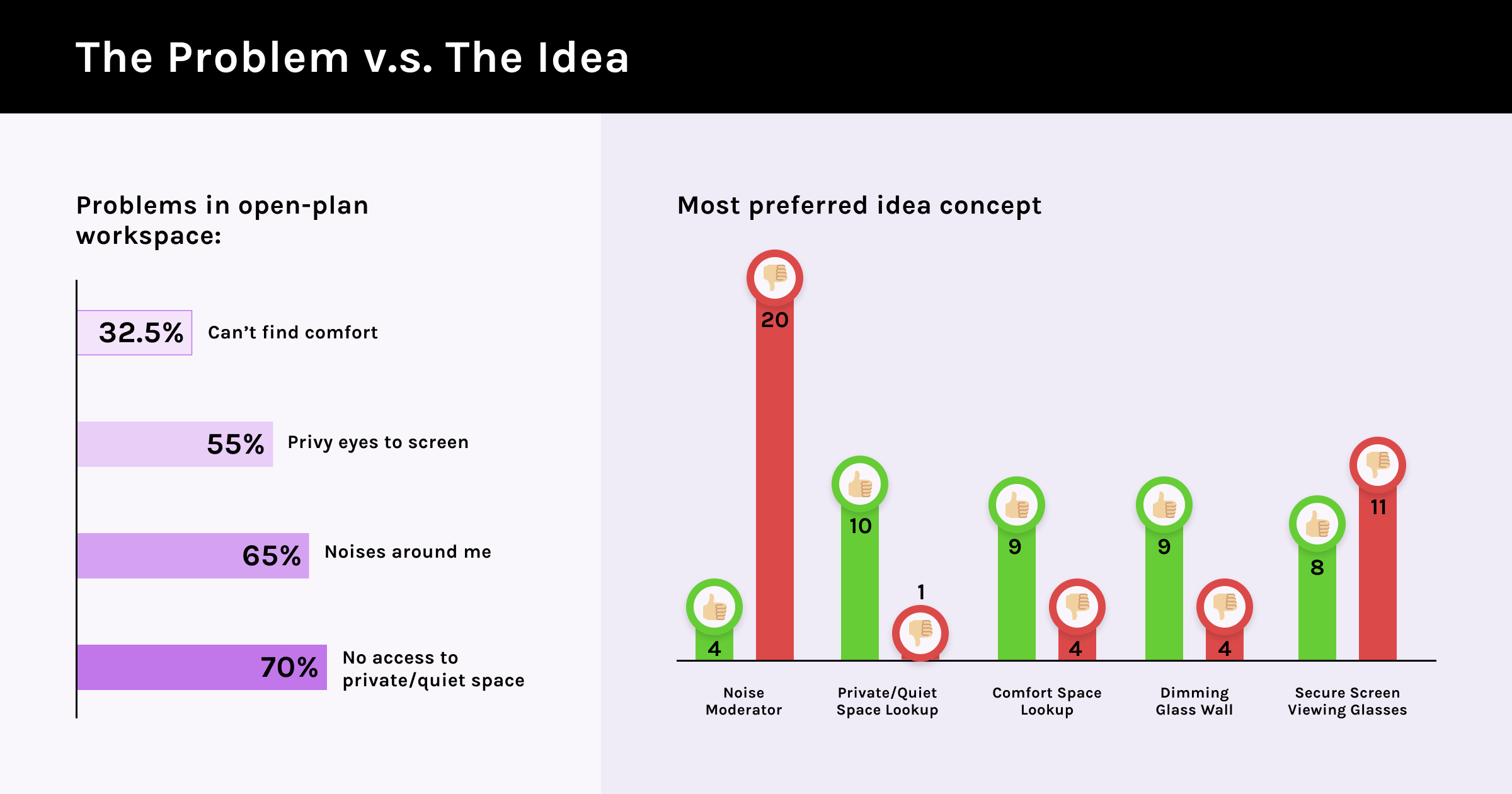
Treading carefully in the micro managing zone.
A major feedback we gathered from the concept testing is the danger of micro-managing. As workers, no one wants to be managed closely at all times. From Microsoft's point of view, the company also doesn't want to represent a micro-managed culture. While some ideas inherently are micro-managing, some other when designed carefullly can avoid this. To avoid micro-managing naturally became a design challenge I had to focus on during the iteration phase.
Being told to keep my voice down has a negative feeling as if I were still in middle-school. For this reason, I don't like the idea even though it might be straight to the point.
Feedback for the noise moderator
Acknowledging the idea limitation.
Private/Quiet office space lookup system was the highest rated idea and was also the final solution we proceeded with. However, a major limitation of the idea reside in the situation where the workers are unable to work on laptop, and hence being tied to desks. We acknowledge the flaw, but decided to proceed with it because our users reported it as the most prevalent problem and recognized its "no booking needed" as a differentiating feature.
